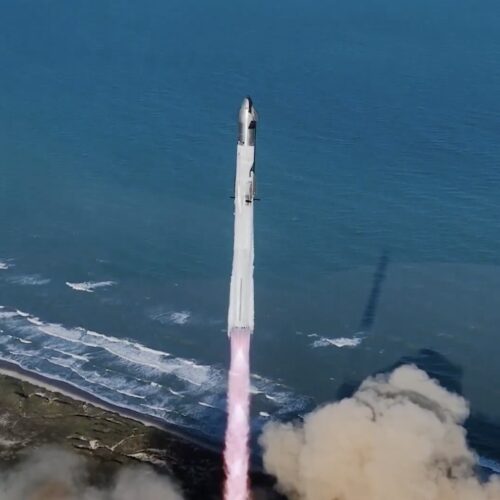ULA Wants to Make Its Rocket ‘Lethal’ to Defend U.S. Assets in Space
The company's CEO suggested equipping the Vulcan Centaur with capabilities to fight orbital enemies.

The first batch of Internet satellites for China's Guowang megaconstellation launched Monday on the country's heavy-lift Long March 5B rocket.
The satellites are the first of up to 13,000 spacecraft a consortium of Chinese companies plans to build and launch over the next decade. The Guowang fleet will beam low-latency high-speed Internet signals in an architecture similar to SpaceX's Starlink network, although Chinese officials haven't laid out any specifics, such as target markets, service specifications, or user terminals.
The Long March 5B rocket took off from Wenchang Space Launch Site on Hainan Island, China's southernmost province, at 5:00 am EST (10:00 UTC) Monday. Ten liquid-fueled engines powered the rocket off the ground with 2.4 million pounds of thrust, steering the Long March 5B on a course south from Wenchang into a polar orbit.


© VCG/VCG via Getty Images

ORLANDO, Florida—Earlier this year, officials at US Space Command released a list of priorities and needs, and among the routine recitation of things like cyber defense, communications, and surveillance was a relatively new term: "integrated space fires."
This is a new phrase in the esoteric terminology the military uses to describe its activities. Essentially, "fires" are offensive or defensive actions against an adversary. The Army defines fires as "the use of weapon systems to create specific lethal and nonlethal effects on a target."
The inclusion of this term in a Space Command planning document was another signal that Pentagon leaders, long hesitant to even mention the possibility of putting offensive weapons in space for fear of stirring up a cosmic arms race, see the taboo of talking about space warfare as a thing of the past.



SpaceX launched its sixth Starship rocket Tuesday, proving for the first time that the stainless steel ship can maneuver in space and paving the way for an even larger, upgraded vehicle slated to debut on the next test flight.
The only hiccup was an abortive attempt to catch the rocket's Super Heavy booster back at the launch site in South Texas, something SpaceX achieved on the previous flight on October 13. The Starship upper stage flew halfway around the world, reaching an altitude of 118 miles (190 kilometers) before plunging through the atmosphere for a pinpoint slow-speed splashdown in the Indian Ocean.
The sixth flight of the world's largest launcher—standing 398 feet (121.3 meters) tall—began with a lumbering liftoff from SpaceX's Starbase facility near the US-Mexico border at 4 pm CST (22:00 UTC) Tuesday. The rocket headed east over the Gulf of Mexico, propelled by 33 Raptor engines clustered on the bottom of its Super Heavy first stage.


© SpaceX.